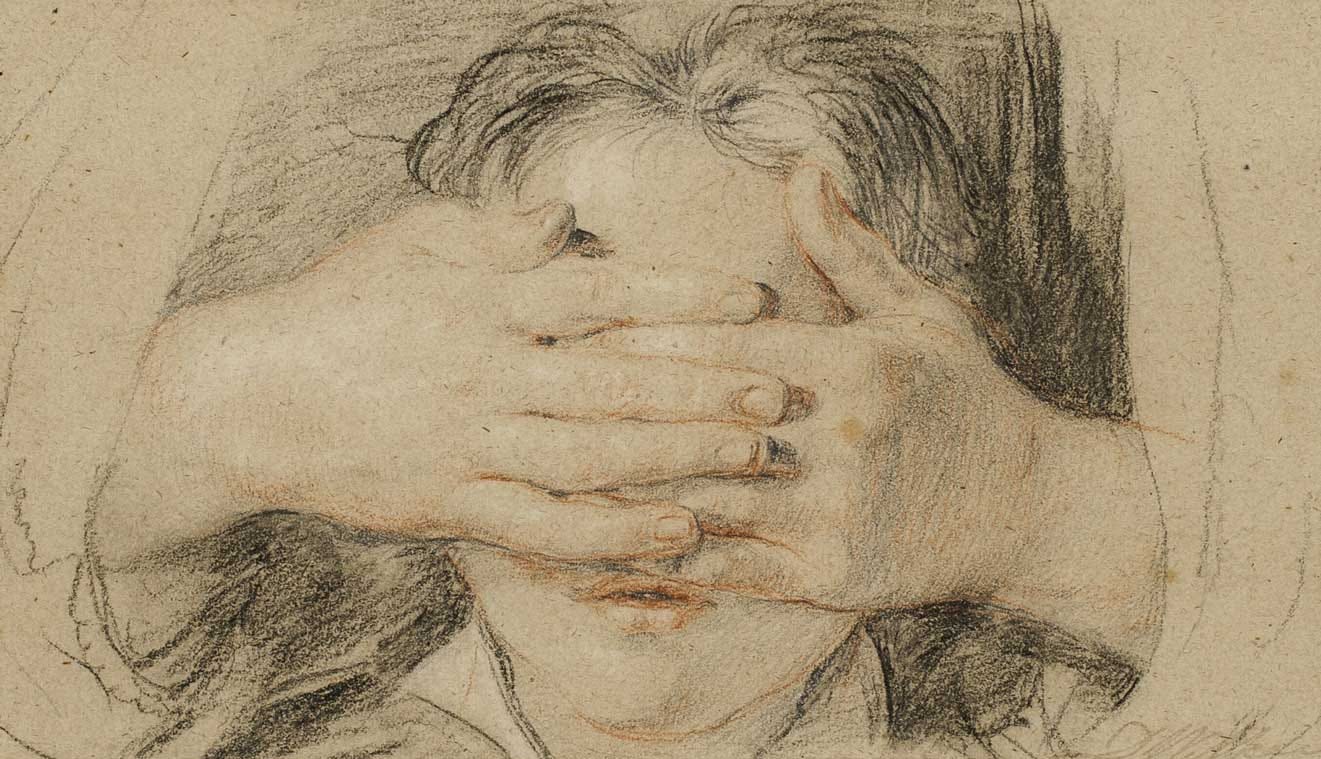Substacks
Inside the Biden Bubble Olivia Reingold
“Please join me in welcoming the President of the United States, Joe Biden.”
About two hundred Democratic donors, LGBTQ activists, and celebrities leap from their seats to get a better view of the president shuffling across a makeshift stage inside a tent erected on a Greenwich Village street. A gray-haired woman unleashes a roar from beneath an N95 mask.
Less than 24 hours earlier, the majority of the 51 million Americans who watched Biden’s debate against Trump had formed a clear consensus: the 81-year-old president is too old for the job—or possibly any job. Even the legacy press, which had dismissed video evidence of Biden’s decline as “cheapfakes” a few days prior, was quickly walking back its position dismissing those concerns, with even The New York Times editorial board declaring, “To Serve His Country, President Biden Should Leave the Race.” But on Friday afternoon, at the opening ceremony for Stonewall National Monument, a new tourist center honoring the gay rights movement, there was not panic but bliss.
“I personally am a fan of Biden,” a man in his 50s gushed to me. “I love Biden and I want him to be president of the United States.”
When I asked the man, who would identify himself only as an “LGBTQIA labor activist,” why he wanted four more years of Biden, he pointed in the direction of the Stonewall Inn, the New York City bar associated with the start of the gay rights movement. Through the thick of celebrities such as Jonathan Groff, Michael Kors, and Neil Patrick Harris, and the display of Pride flags waving in the wind, I can almost see its brick facade.
“I came out seven years after Stonewall,” he shared. “So, to see the president of the United States acknowledging the LGBTQ. . . ” he stumbles for a moment, “plus IA. . . I never thought I’d see that in my lifetime.”
As a tinny rendition of Hail to the Chief blares through the speaker system, the president emerges from behind a set of velvet curtains. He shadowboxes the air as he goes in to hug Ann Marie Gothard, the activist who introduced him as “someone who has championed LGBTQ+ equality.”
“Hello everyone, happy Pride,” Biden strains, pivoting at the podium like C-3PO. “It’s your love for each other and your vision for this community, and for our country, that brought this center to life.”
For the next seven minutes, the president harks back to the 1969 uprising at Stonewall (“the soul of the nation was literally tested”), details the first time he saw two men kiss as a teenager in Wilmington, Delaware, and gives a shout-out to the local gay community—“especially trans women of color.”
“We’re in the battle for the soul of America,” he said, repeating a version of his signature line for the fourth time that afternoon. “Well, I look around at the pride, hope, and light that all of you—all of you bring—and I know it’s a battle we’re going to win and continue to make progress.”
A voice from the back fills the tent: “I will with you.”
This is Biden’s second appearance of the day. Hours earlier, he’d been at a rally in Raleigh, North Carolina, where the press claimed the president “jogged toward the microphone” and “gave clear and concise descriptions of his positions on abortion, immigration, taxes, and race.” Guess you had to be there. Instead, I appeared to be the lone reporter who had escaped the press pen to witness his commemoration of the National Park System’s first LGBTQ+ visitor center. Only once did he hint at his disastrous performance the night before, at the end, when said, “I want to say a hell of a lot more, but I’m not going to.”
Then he pivots: “Because I want to hear a guy, you know, there’s a guy that you’ve probably heard about.” He concludes, “Please welcome El-in Jaaahn.”
Suddenly, Elton John saunters onstage and positions himself behind a shiny grand piano, launching into a rousing performance of “Bennie and the Jets.”
Earlier that evening, Katy Perry, the Grammy-nominated pop star, was walking through a metal detector, her long black hair swaying behind her. When I ask if she watched the debate, she frowns beneath her silver sunglasses.
“I still think that the most decent man wins,” she replies.
I ask her if Biden is the “most decent man.”
“Of course,” she said. “Is that a rhetorical?”
By the porta potties—top of the line, by the way, even including running water—I do find one critic. He’s a 28-year-old social media manager from Philadelphia named Jabari Cherry. Dressed in monochromatic layers of brown, Cherry tells me there is one thing Biden could do to make him “more comfortable” voting for the clear loser of Thursday’s debate.
“I like Biden,” he shrugs. “But I guess my critique is that Biden could’ve been a little faster shooting down what Trump said.”
“If he could be a little more concise,” he continued, “I think that would dispel all the confusion that Trump seems to put out.”
Chenault Spence, an 85-year-old operatic lighting designer, tells me he woke up that morning and tried to puzzle through the lesson of the presidential debate with his partner.
“We tried to figure out this morning what the job of the president is. And what we came up with was that—we did it pretty well—it’s to make reasoned judgments, from a philosophy and point of view, to serve the country. It’s not a contest.”
When I remind him that it literally is a contest, and one in which 60 percent of voters now want Biden replaced as the nominee, he tells me that he meant there’s no competition for his vote—it’s going straight to Biden.
“Making reasoned judgments is done quietly with aides and input, not by performing on a stage,” he said.
The previous night, MSNBC’s Chris Hayes made a similar point during the network’s post-debate roundtable, saying, “The job of the president is making decisions. The job of a presidential candidate is to communicate.” The television host added, “I think Joe Biden has a very good record on making decisions. And I think he’s a very poor communicator right now.”
Spence, who told me he’s an MSNBC viewer, said the best way to parse what happened on Thursday night is to read a transcript—“that is what one should do,” he said.
“I was so focused on the substance on one side,” he said, referring to Biden, “and the lack of it on the other. I didn’t notice there was a problem.”
When I ask how that’s possible, he pointed to the hearing aids tucked behind his ears.
“I have hearing problems,” he said. “I saw that it was slower and not as animated as usual. But every point was made.”
Later that evening, the president attended a Midtown fundraiser where cocktails went for $17 a pop. The next day, he met with more donors at a billionaire’s house in the Hamptons. By Sunday, he was on his way to Camp David with his family for a scheduled photo session with celebrity snapper Annie Leibovitz. Meanwhile, as wars continue to rage in Ukraine and Gaza, the number of Americans who have faith in the president is dropping—a whopping 72 percent think he is not mentally and physically fit for the job.
It appears everyone inside the Biden bubble has a hearing problem.
Olivia Reingold is a field reporter at The Free Press. Follow her on X @Olivia_Reingold and read her piece “Could Trump Turn the Bronx Red?”
To support our mission of independent journalism, become a Free Press subscriber today:
Substacks
July 2, 2024 Heather Cox Richardson
On July 2, 1776, the Second Continental Congress passed a “Resolution for Independence” declaring “That these United Colonies are, and of right ought to be, free and independent States, that they are absolved from all allegiance to the British Crown, and that all political connection between them and the State of Great Britain is, and ought to be, totally dissolved.”
Also known as the “Lee Resolution,” after Virginia delegate Richard Henry Lee, who had proposed it, the resolution was the final break between the king and the thirteen colonies on the North American continent that would later become the United States of America.
The path to independence had been neither obvious nor easy.
In 1763, at the end of what was known in the colonies as the French and Indian War, there was little indication that the colonies were about to start their own nation. The war had brought an economic boom to the colonies, and with the French giving up control of land to the west, Euro-American colonists were giddy at the prospect of moving across the Appalachian Mountains. Impressed that the king had been willing to expend such effort to protect the colonies, they were proud of their identity as members of the British empire.
That enthusiasm soon waned.
To guard against another expensive war between colonists and Indigenous Americans, the king’s ministers and Parliament prohibited colonists from crossing the Appalachians. Then, to replenish the treasury after the last war, they passed a number of revenue laws. In 1765 they enacted the Stamp Act, which placed a tax on printed material in the colonies, everything from legal documents and newspapers to playing cards.
The Stamp Act shocked colonists, who saw in it a central political struggle that had been going on in England for more than a century: could the king be checked by the people? Colonists were not directly represented in Parliament and believed they were losing their fundamental liberty as Englishmen to have a say in their government. They responded to the Stamp Act with widespread protests.
In 1766, Parliament repealed the Stamp Act but linked that repeal to the Declaratory Act, which claimed for Parliament “full power and authority to make laws and statutes…to bind the colonies and people of America…in all cases whatsoever.” This act echoed the 1719 Irish Declaratory Act, which asserted that Ireland was subordinate to the British king and Parliament. It also imposed new taxes.
As soon as news of the Declaratory Act and the new taxes reached Boston in 1767, the
Massachusetts legislature circulated a letter to the other colonies standing firm on the right to equality in the British empire. Local groups boycotted taxed goods and broke into warehouses whose owners they thought were breaking the boycott. In 1768, British officials sent troops to Boston to restore order.
Events began to move faster and faster. In March 1770, British soldiers in Boston shot into a crowd of men and boys harassing them, killing five and wounding six others. Tensions calmed when Parliament in 1772 removed all but one of the new taxes—the tax on tea—but then, in May 1773, it tried to bail out the failing East India Company by giving it a monopoly on tea sales in the colonies. The result would be cheaper tea in the colonies, convincing people to buy it and thus establishing Parliament’s right to impose the tax.
Ships carrying the East India tea sailed for the colonies in fall 1773, but mass protests convinced the ships headed to every city but Boston to return to England. In Boston the royal governor was determined to land the cargo. On December 16, 1773, men dressed as Indigenous Americans boarded the Dartmouth, tied to a wharf in Boston Harbor, and tossed the tea overboard. Parliament promptly closed the port of Boston, strangling its economy.
In fall 1774, worried colonial delegates met as the First Continental Congress in Carpenters’ Hall in Philadelphia to figure out how to stand together against tyranny. In Massachusetts a provincial congress stockpiled weapons and supplies in Concord and called for towns to create companies of men who could be ready to fight on a minute’s notice.
British officials were determined to end the rebellion once and for all. They ordered General Thomas Gage to arrest Boston leaders Samuel Adams and John Hancock, who were rumored to be in Lexington, and to seize the supplies in Concord. On the night of April 18, 1775, the soldiers set out. The next morning, on the Lexington town green, the British regulars found several dozen minutemen waiting for them. The locals began to disperse when ordered to, but then a shot cracked through the darkness. The regulars opened fire. Eight locals were killed, another dozen wounded.
The regulars marched on to Concord, where they found that most of the supplies had been removed. Then, when they turned to march back to Boston, they found their retreat cut off by minutemen firing from behind boulders, trees, and farmhouses. Seventy-three regular soldiers were killed, another 174 were wounded, and 26 were missing. There were 96 colonial casualties: 49 killed, 41 wounded, and 5 missing.
Before disbanding the year before, the First Continental Congress had agreed to meet again if circumstances seemed to require it. After the events at Lexington and Concord, the delegates regrouped in Philadelphia in late spring 1775, down the street from Carpenters’ Hall in the Pennsylvania State House, a building that we now know as Independence Hall.
The Second Continental Congress agreed to pull the military units around Boston into a Continental Army and put George Washington of Virginia in charge of it. But delegates also wrote directly to the king, emphasizing that they were “your Majesty’s faithful subjects.” They blamed the trouble between him and the colonies on “many of your Majesty’s Ministers,” who had “dealt out” “delusive presences, fruitless terrors, and unavailing severities” and forced the colonists to arm themselves in self-defense. They begged the king to use his power to restore harmony with the colonies. By the time the Olive Branch Petition made it to England in fall 1775, the king had already declared the colonies to be in rebellion.
In January 1776 a 47-page pamphlet, published in Philadelphia by newly-arrived immigrant Thomas Paine, provided the spark that inspired his new countrymen to make the leap from blaming the king’s ministers for their troubles to blaming the king himself. “In the following pages I offer nothing more than simple facts, plain arguments, and common sense,” Paine wrote.
Paine rejected the idea that any man could be born to rule others, and he ridiculed the idea that an island should try to govern a continent. “Where…is the King of America?” Paine asked in Common Sense. “I’ll tell you Friend…so far as we approve of monarchy…in America THE LAW IS KING. For as in absolute governments the King is law, so in free countries the law ought to be King; and there ought to be no other.
“A government of our own is our natural right: And when a man seriously reflects on the precariousness of human affairs, he will become convinced, that it is infinitely wiser and safer, to form a constitution of our own in a cool deliberate manner, while we have it in our power, than to trust such an interesting event to time and chance. If we omit it now, some [dictator] may hereafter arise, who laying hold of popular disquietudes, may collect together the desperate and the discontented, and by assuming to themselves the powers of government, may sweep away the liberties of the continent like a deluge.”
“We have it in our power,” Paine wrote, “to begin the world over again.”
As Common Sense swept the colonies, people echoed Paine’s call for American independence. By April 1776, states were writing their own declarations of independence, and a Virginia convention asked the Second Continental Congress to consider declaring “the United Colonies free and independent States, absolved from all allegiance to, or dependence upon, the Crown or Parliament of Great Britain.” On June 7, Lee put the resolution forward. Four days later, the Congress appointed a committee to draft such a declaration.
Congress left time for reluctant delegates to come around to the resolution, so it was not until July 2 that the measure passed. “The Second Day of July 1776, will be the most memorable Epocha, in the History of America,” Massachusetts delegate John Adams wrote to his wife, Abigail, on July 3. While we celebrate the signing of the final form of the declaration two days later, the adoption of the Lee Resolution marked the delegates’ ultimate conviction that a nation should rest not on the arbitrary rule of a single man and his hand-picked advisors, but on the rule of law.
—
Notes:
https://avalon.law.yale.edu/18th_century/contcong_07-08-75.asp
John M. Barry, Roger Williams and the Creation of the American Soul: Church, State, and the Birth of Liberty (New York: Viking, 2012).
https://www.gutenberg.org/files/147/147-h/147-h.htm
https://www.archives.gov/milestone-documents/lee-resolution
https://www.nps.gov/inde/learn/historyculture/resources-declaration-secondcontinentalcongress.htm
https://www.nps.gov/mima/learn/historyculture/april-19-1775.htm
Substacks
How ‘Misinformation’ Becomes Common Knowledge Timur Kuran

How did something considered misinformation on Thursday afternoon become common knowledge by Thursday night?
The social mechanism that converts supposed misinformation into consensus is a topic that I have studied for many years. It involves something ubiquitous: the twin acts of misrepresenting what we know and what we want under perceived social pressures. As I explained in my book, Private Truths, Public Lies, such expressions of insincerity can do serious harm. The Biden-Trump debate and its aftermath provide a powerful case in point. Allow me to explain.
Until Thursday night’s CNN debate, a majority of Democrats were afraid to tell a basic truth in public—to say openly what they know about Joe Biden’s physical and mental health—for fear of emboldening Donald Trump or taking a position that may seem adverse to their party. So they kept their knowledge of his declining cognitive abilities private and, in public, conveyed impressions and issued reports at odds with their own senses.
If they felt that a different candidate had a higher chance of beating Trump, with rare exception they kept that preference hidden and pretended to agree with the idea, repeated ad infinitum, that Biden remained the party’s best hope.
Preference and Knowledge Falsification
Why did they do this? Fear. Fear, in this case, of being punished by their fellow Democrats.
Fear of being punished by a crowd is not unique to Democrats, or liberals, or Americans. It is an innate human response to the dangers of being ostracized, to being cut off from friendships and privileges that are critical to survival. We are born with a need for social acceptance. That need is what drives knowledge falsification and preference falsification.
Each of these—misrepresenting what you know and what you prefer—is a special form of lying. Most “in the know” Democrats engaged in both over the past few years: knowledge falsification about Biden’s decline and preference falsification about whether he should be the party’s nominee.
So even as hardly a day passed without new video clips showing a disoriented and frail Biden, Democrats, aided by swaths of left-leaning media, rushed to dismiss the clips as taken out of context, or as misleading because of the cameraman’s perspective, or as malicious misinformation. They would also vilify the producers and spreaders of the videos as MAGA villains out to destroy democracy. In no uncertain terms, qualms about Biden’s age or cognitive capacity were treated as unwelcome, even as a betrayal of democracy itself.
Those Democrats who refused to lie about what they knew once they knew it—people like Dean Phillips and, much later, Ezra Klein—surely sensed that Biden’s condition could not remain a secret forever. And they worried that, should the news spread before Election Day, he could lose votes essential to winning. Better to preempt that eventuality, they argued, by picking a younger candidate while time remains for him or her to gain national name recognition. If the stakes are democracy, could there be any other choice?
But the Biden campaign would have none of it. Talk of replacing Biden was regarded as irresponsible, meant to push away voters Democrats need— and, they argued, it would facilitate Trump’s return. Insiders also brought up—more commonly in private conversations than in public settings—an obstacle to getting the party to unite around an alternative nominee. Were Biden to bow out, Vice President Kamala Harris might create an even bigger problem. Despite her low approval ratings, she would likely insist on moving to the top of the ticket. Other candidates could emerge, triggering accusations of racism and sexism, fracturing the party. Whatever the resolution, the infighting would cause epic Democratic losses up and down the ballot.
And so, for the first half of 2024, the majority of Democrats who favored Biden’s retirement kept their preferences private.
A Trap of Their Own Making
As signs of Biden’s diminished mental acuity mounted, knowledge and preference falsification trapped Democratic elites. Though few implored Biden to step aside in the months and weeks before the CNN debate, Democratic officeholders and an overwhelming majority of Democratic journalists maintained a facade of unity. To individual doubters, this unity posed an insurmountable obstacle to speaking truthfully. It meant that they were likely to face accusations of betrayal alone, possibly even without backing from friends. Although the private doubters of nominating Biden may have had the edge numerically against his genuine supporters, the doubters had no way to mobilize. Because they kept their private truths hidden, they could not even find each other, much less coordinate their actions and form an effective anti-Biden coalition.
Knowledge and preference falsification can do far more damage than mere self-censorship. In this case, Democrats close to Biden, and thereby “in the know,” deliberately misled their fellow Democrats into thinking that chatter about Biden’s deterioration was merely propaganda orchestrated by Republicans and their allies. They circulated cherry-picked videos of choreographed events as ostensible proof that Biden was as sharp as ever. In March, they proclaimed that Biden’s State of the Union address, in which he read a prepared speech from a teleprompter, should put to rest questions about his fitness.
Knowledge and preference falsification pollute the bodies of information that individuals use in developing their understandings of the world and their rankings among options. They misinform the polity about what is known and preferred. They conceal feasible options. They obscure the extent of support for changing direction. In fostering a culture of mendacity, they hinder the identification of discontent and compound the difficulties of forming coalitions among people eager to switch course.
The Trap Shatters
The self-imposed Democratic trap shattered in the first few minutes of the CNN debate. Posts on X and calls from horrified Democrats set off an open national conversation. Long-apprehensive Democratic-aligned journalists, officeholders, and other influential party members finally found in themselves the courage to voice what they have known and wanted, but suppressed.
As Biden spoke incoherently, his debility became common knowledge. Suddenly everyone knew—and everyone knew that everyone knew. Because tens of millions of Americans were watching, every viewer understood that all other viewers, whatever their political biases, were witnessing the same thing. No amount of spin could overcome what we were seeing with our own eyes.
The trap’s collapse made fear among many Democratic elites flip sides. Their predominant pre-debate fear of signaling reservations about Biden’s candidacy gave way to an ascendant and now-dominant fear of continuing to endorse the approved narrative.
But by no means were the Democratic opinion leaders who exploded in horror after the debate alone in initiating a national conversation on Biden’s candidacy. The Democratic rank-and-file played a critical role in pressuring elites to start saying what they had known long before the debate.
Most Americans are detached from the twists and turns of daily news cycles. They tune in only during major crises and elections. So to many of these Democratic voters, Biden’s performance came as a genuine shock.
We will never know whether Democratic elites would have dismantled their self-destructive trap without a flood of honest reactions from the Democratic rank-and-file. The president’s performance was so disastrous that it might have been sufficient to drive enough elites to their boiling points to start a cascade of truthfulness among themselves.
It may have made all the difference that a huge national audience watched the debate live. If the debate had not been televised, with only the press witnessing it, reporters might have been able to spin the exchange as a win for Biden by focusing on Trump’s wild exaggerations and his non-answers, along with some Biden mini-quotes that seem coherent on paper. In other words, the out-in-the-open, live nature of the debate may have been critical to generating the common knowledge of Biden’s current state.
One thing is certain: the discovery by Democratic elites of Biden’s deterioration on Thursday night was mostly feigned. Individually and collectively, they chose not to convey truthfully what they knew or what decisions they considered necessary for electoral success. They knew. But like many human beings faced with the consequences of telling the truth, they opted to misinform.
Timur Kuran is a professor of economics and political science at Duke University. He is also the author of many books, including the seminal Private Truths, Public Lies. Follow him on X @timurkuran.
Become a Free Press subscriber today:
The Free Press earns a commission from any purchases made through all book links in this article.
Substacks
Joe Nocera: Mind the Gap Joe Nocera

I was in my car, listening to Morning Joe on SiriusXM, on the morning of June 4, the day The Wall Street Journal published a story documenting what we all saw Thursday night: President Joe Biden “slipping,” as the headline put it.
In addition to quotes, both anonymous and on the record, about Biden’s mental acuity, the article detailed three meetings during which the president’s “level of engagement was uneven.” The Journal quoted a participant at one of the meetings saying, “You couldn’t be there and not feel uncomfortable. I’ll just say that.”
And how did the hosts and guests on Morning Joe react to this well-reported story with its wealth of telling details? With venom. Instead of acknowledging that it might have some validity, they derided the article. “This does have the feeling of Trump acolytes laundering their attacks through a reputable, prestigious news organization,” said co-host Willie Geist.
“This was a classic, classic hit piece, probably ordered up by the 93-year-old, fifth-time married Rupert Murdoch over the weekend,” added Morning Joe regular Mike Barnicle.
In fact, it was anything but a hit piece. Rather, it was the product of journalism’s essential function: finding out the truth, and then bringing that truth to the public. Indeed, according to the Journal, Biden’s problems—problems most elderly people face sooner or later—were not some kind of new phenomenon. One of the meetings the Journal recounted took place 14 months ago, in May 2023.
-

 Awakening Video10 months ago
Awakening Video10 months agoThis is What Happens When You Try to Report Dirty Cops
-

 Substacks3 months ago
Substacks3 months agoTHE IRON-CLAD PIÑATA Seymour Hersh
-

 Substacks9 months ago
Substacks9 months agoThe Russell Brand Rorschach Test Kathleen Stock
-

 Substacks10 months ago
Substacks10 months agoA real fact-check of Trump’s appearance on Meet the Press Judd Legum
-

 Substacks8 months ago
Substacks8 months agoLetter to the Children of Gaza – Read by Eunice Wong Chris Hedges







